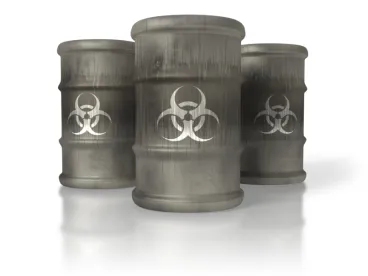As noted in our blog posting on November 16, 2016, the U.S. Environmental Protection Agency (EPA) announced on December 1, 2016, that its Office of Pollution Prevention and Toxics (OPPT) will hold a public meeting on December 14, 2016, from 9:00 a.m. to 3:00 p.m. (EST) to update the public on changes to the New Chemicals Review Program under the Toxic Substances Control Act, as amended by the Frank R. Lautenberg Chemical Safety for the 21st Century Act (TSCA). Note the time change from EPA’s previous announcement of this public meeting; the meeting time has been extended to end at 3:00 p.m. instead of the original 12:00 p.m. Reportedly, the response to EPA’s earlier notice was quite robust so EPA has extended the public meeting by three hours.
EPA states that it will “describe its review process for new chemicals under the amended statute, as well as discuss issues, challenges, and opportunities that the Agency has identified in the first few months of implementation.” Interested parties will have the opportunity to comment “on their experiences with the New Chemicals Review Program, including submittal of pre-manufacture notices (PMNs), microbial commercial activity notices (MCANs), and significant new use notices (SNUNs) under section 5 of the law.” Information obtained during this meeting and from submitted written comments will be considered as EPA works to “implement the new requirements and improve the efficiency of its review process under TSCA.”
In-person and webinar registration is available now. EPA is requesting that interested parties register by December 13, 2016. Written comments will be accepted via www.regulations.gov under Docket EPA-HQ-OPPT-2016-0658 and must be submitted by January 14, 2017.
More information on new chemicals review under amended TSCA is available in our memorandum TSCA Reform: An Analysis of Key Provisions and Fundamental Shifts in the Amended TSCA.
Commentary
As noted in our earlier blog, given the considerable impact of new TSCA on EPA’s New Chemicals Program, this public meeting is a must attend for TSCA stakeholders. Interested parties should come to the meeting with thoughtful questions and clear expectations as to what stakeholders can usefully share with EPA at the meeting. This could be the first of several such meetings to help interested parties understand the processes OPPT is developing in response to new TSCA, add greater transparency to those processes, and to assist EPA as appropriate with implementing the new law.
One point in particular that we draw attention to is a sentence at the top of page 86714 in the Federal Register notice describing the affirmative determinations that initially are tied to unreasonable risk determinations, then goes on to claim that there is an alternative concerning “insufficient information to allow for a determination.”
Pursuant to the amended law, EPA is now required to make an affirmative determination as to whether or not the new use or new chemical presents, may present, or is not likely to present an unreasonable risk of injury to health or the environment, or, alternatively, if there is insufficient information to allow for a determination.
This reading of the law is plainly at odds with the text that clearly states (Section 5(a)(1)(B)) that EPA has to “make a determination under subparagraphs (A), (B), or (C) of paragraph (3).” The insufficient information provision appears at Section 5(a)(3)(B)(i). and, thus, “insufficient information” is both included within (B) and is a determination. We also note that in discussing the affirmative determinations, EPA has omitted discussion of the substantial production/exposure determination at Section 5(a)(3)(ii)(II).
While this may only represent an error in drafting the notice, it is also possible that it indicates a basic misunderstanding of the new chemicals provisions, a view that may find support in some of the decisions recently communicated to our clients in “action letters” on Section 5 notices.



 />i
/>i

